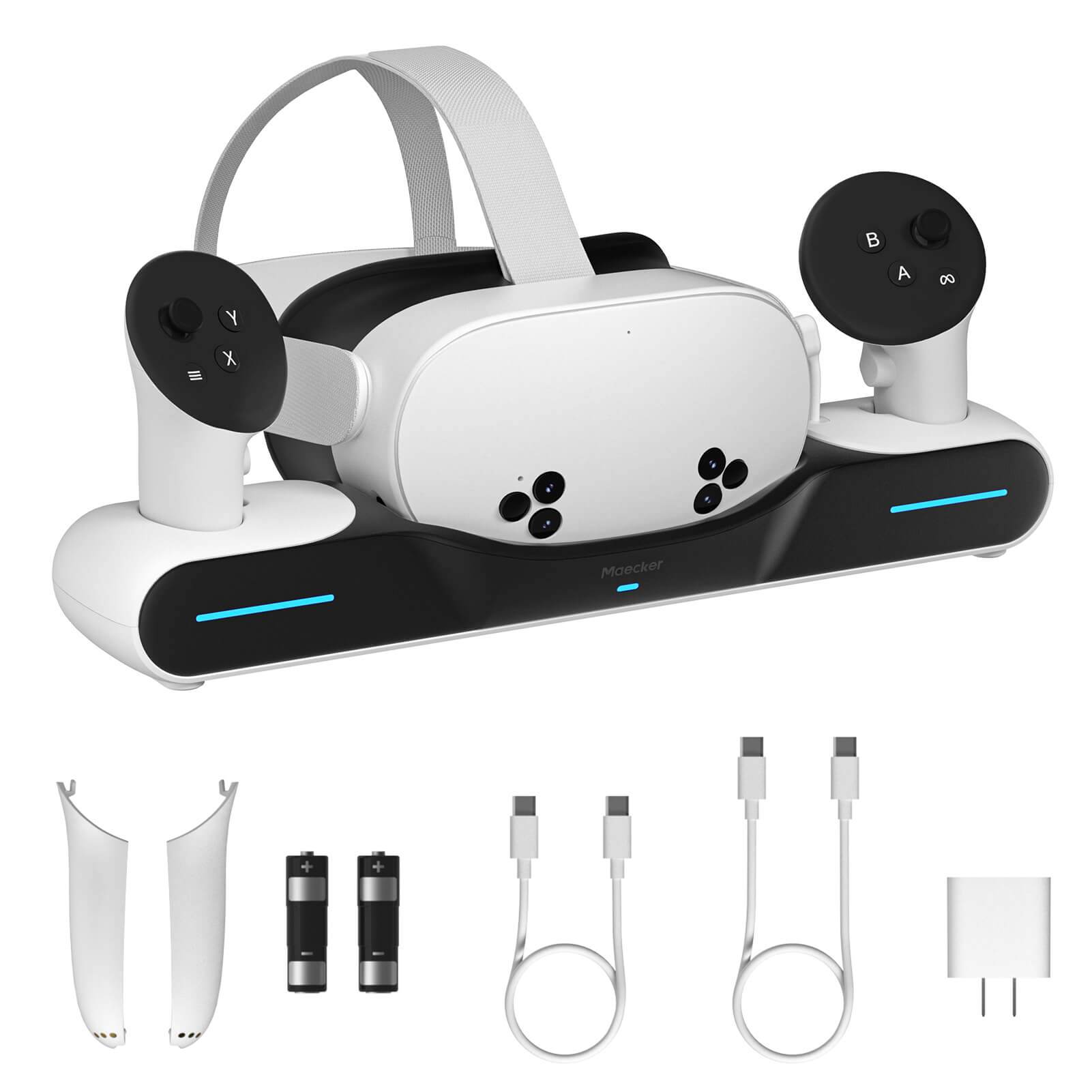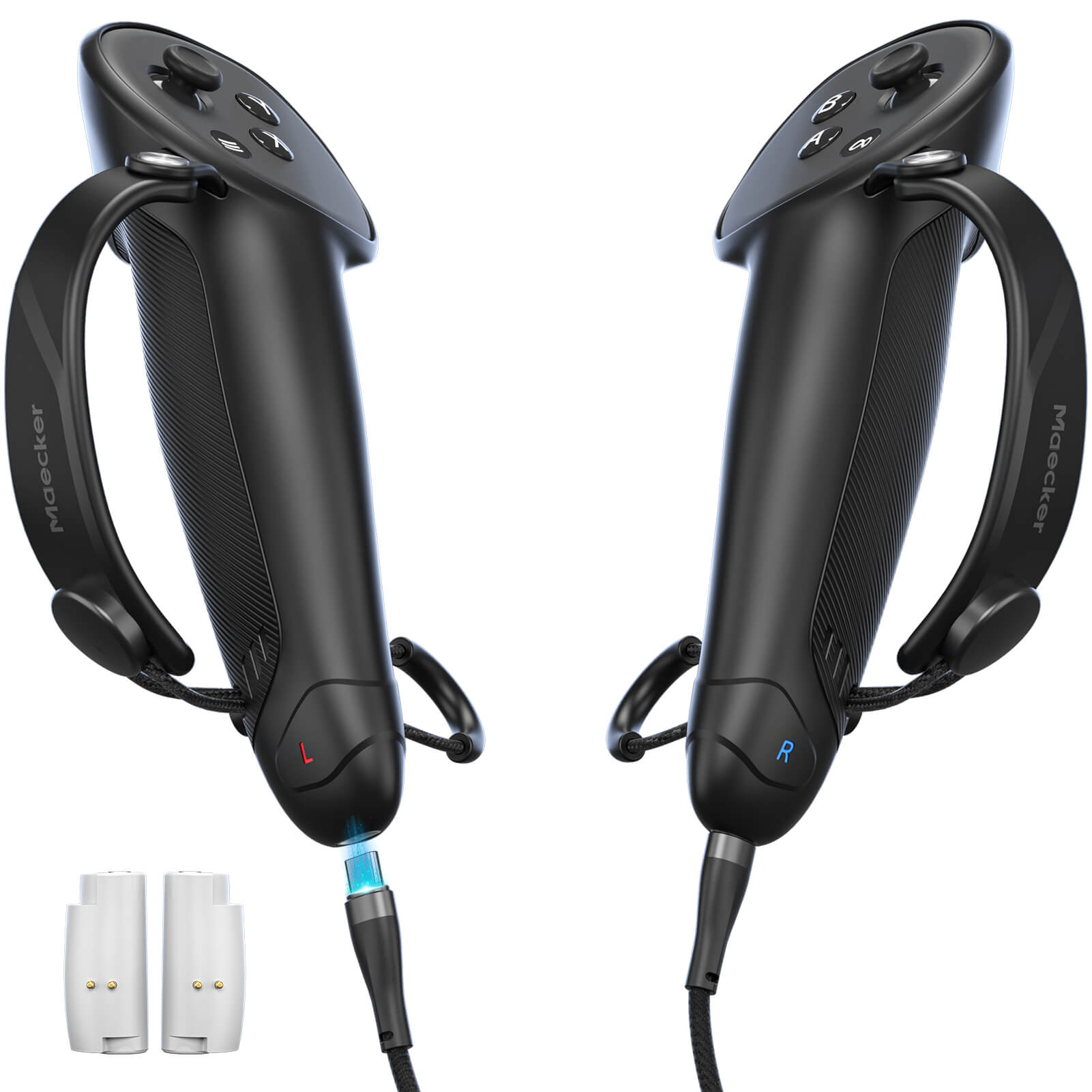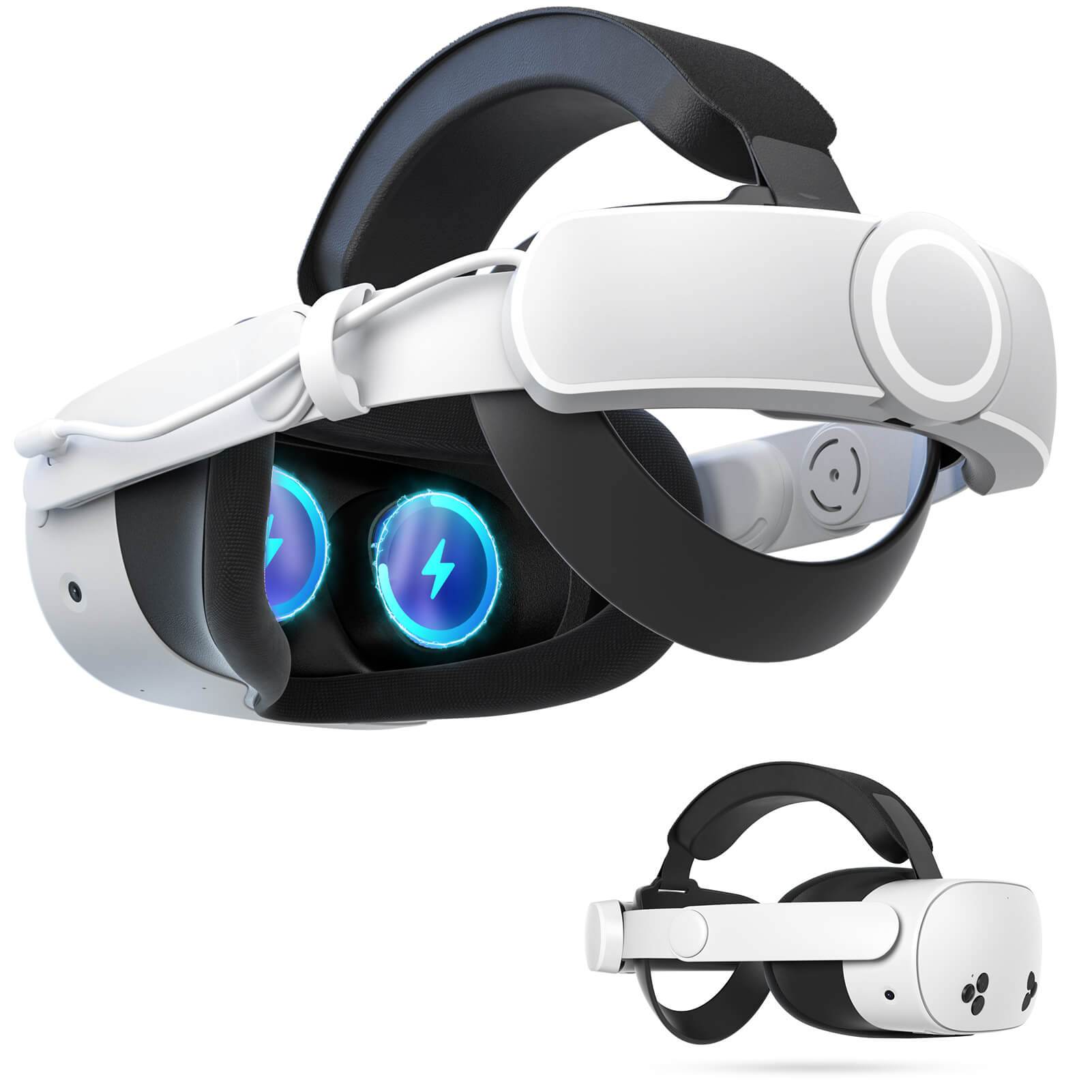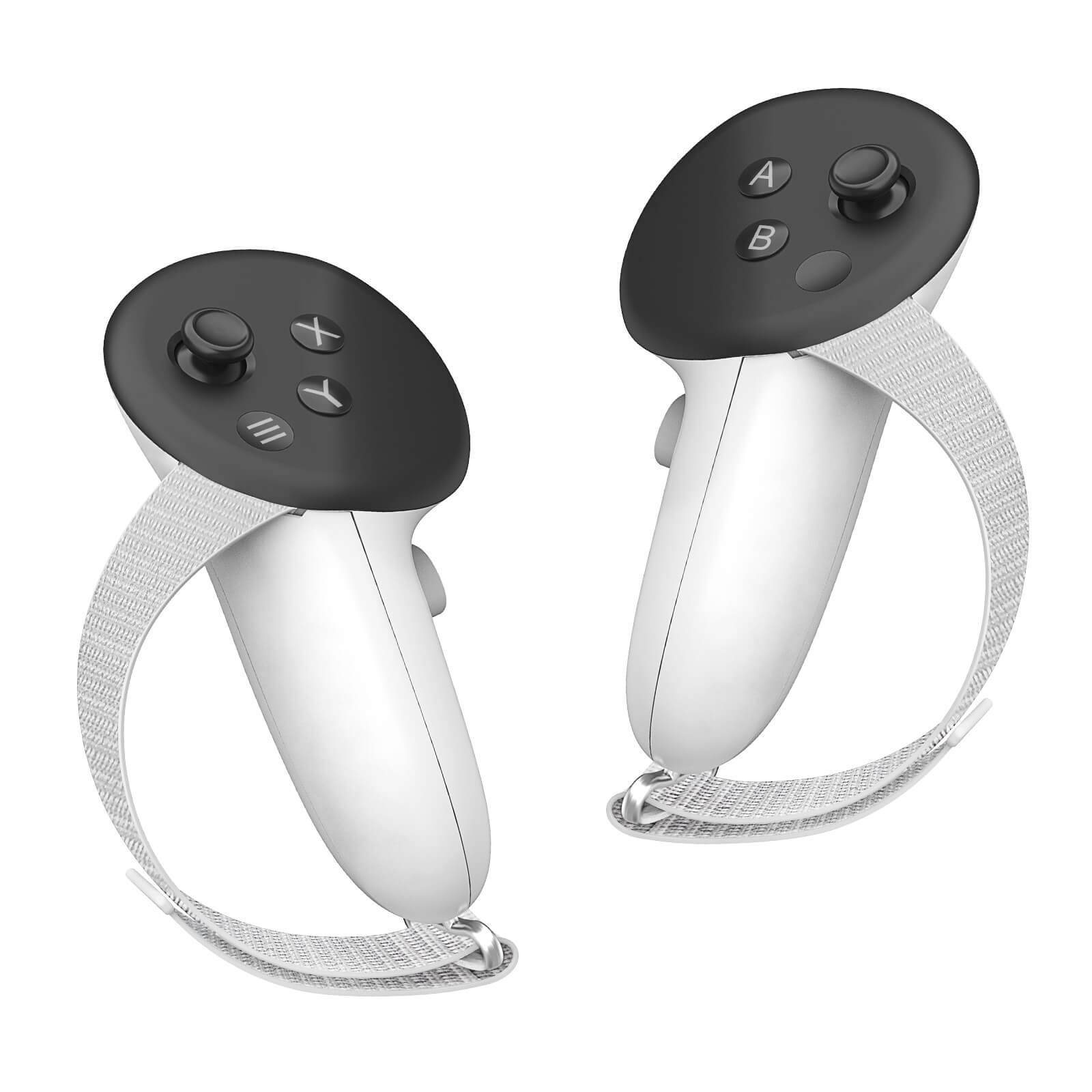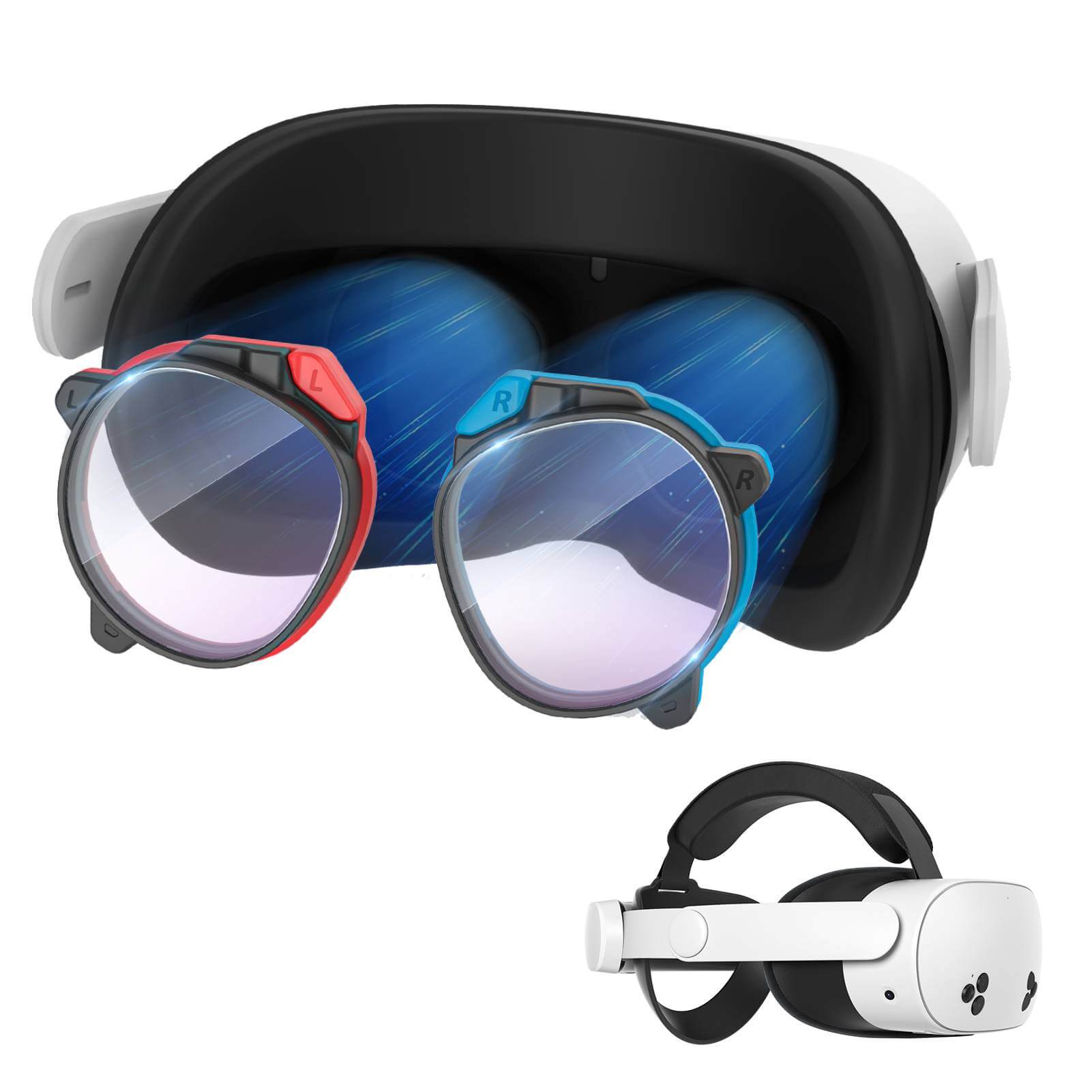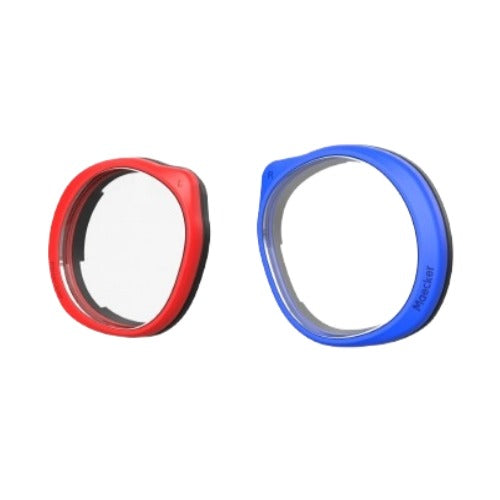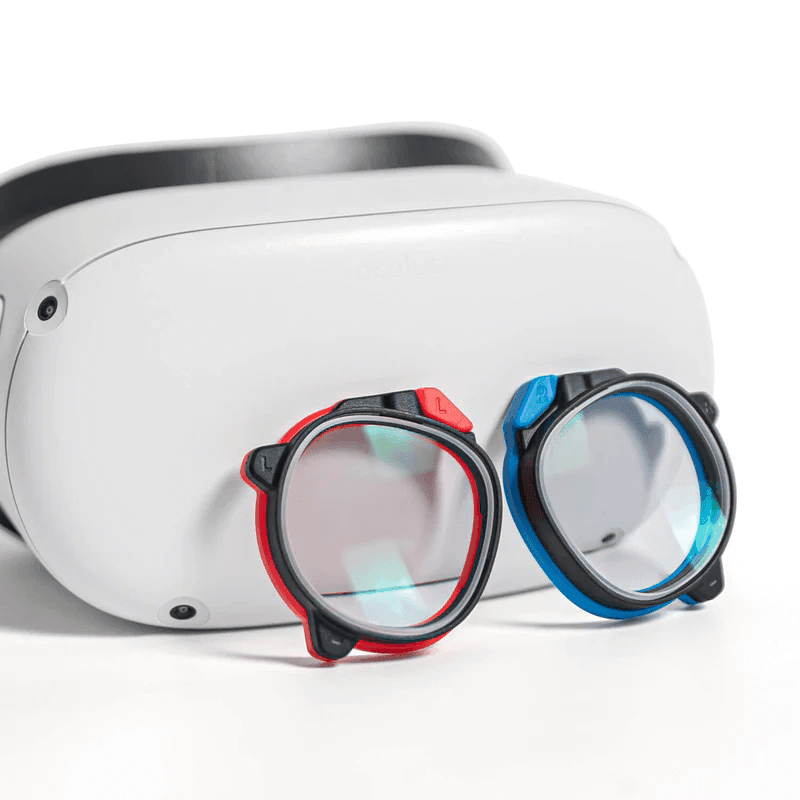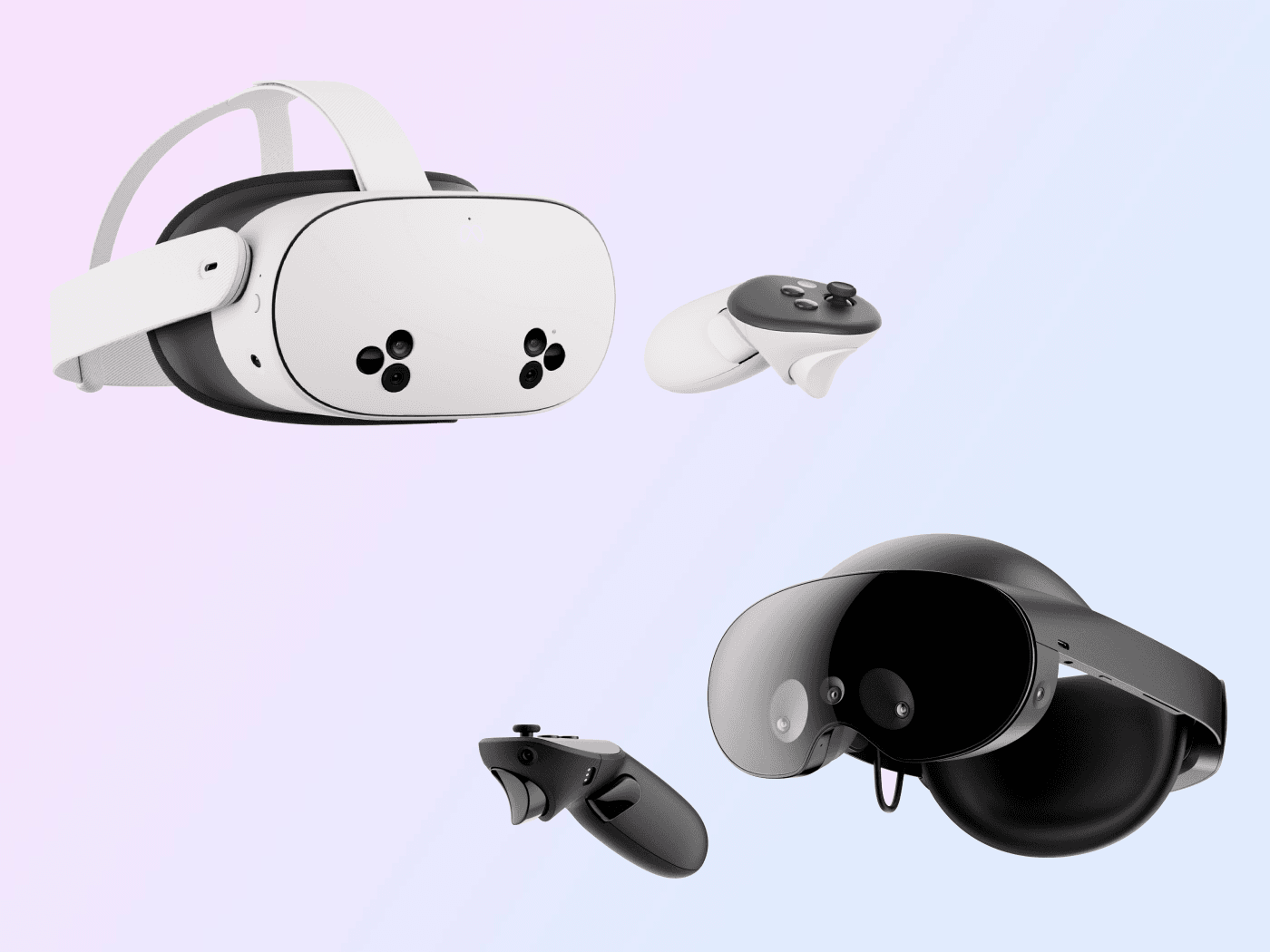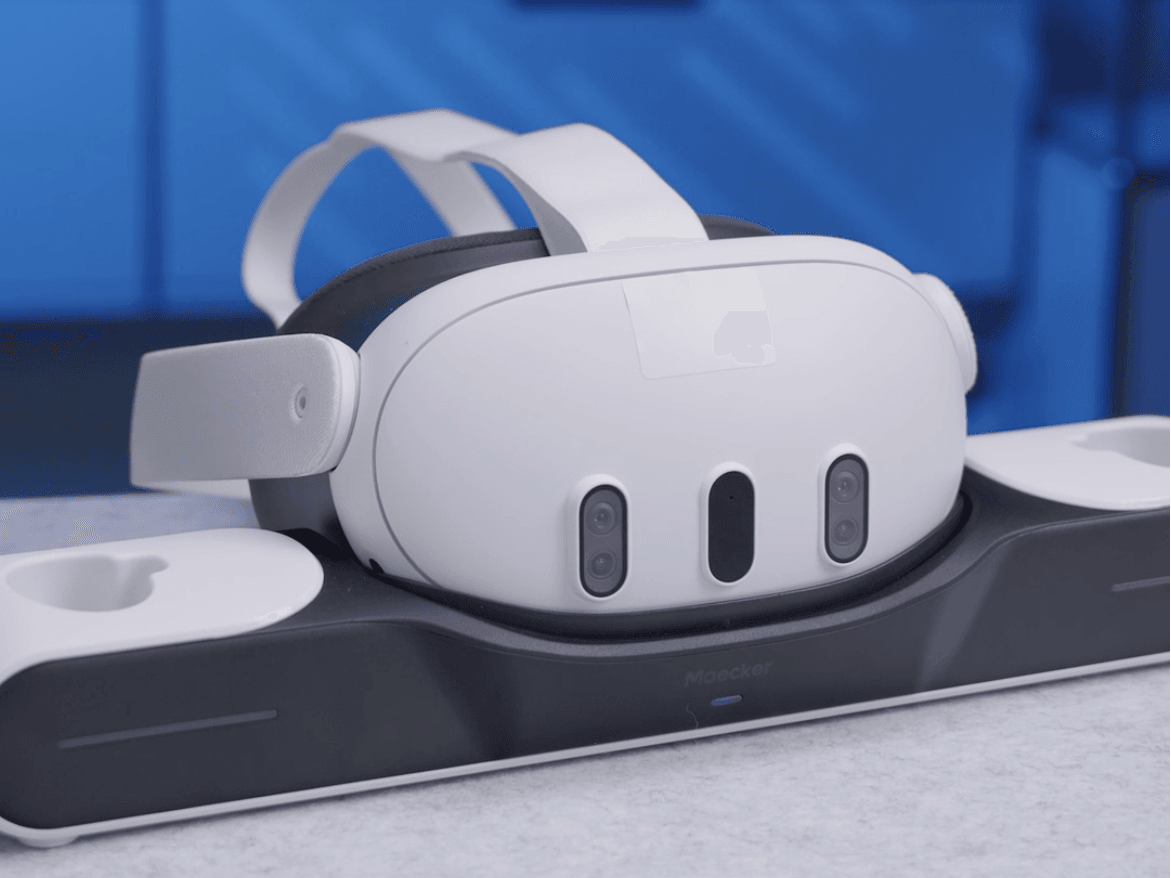La technologie de réalité virtuelle continue d'évoluer, offrant de nouvelles fonctionnalités et des expériences améliorées. Meta a été à l'avant-garde de cette tendance, avec des casques comme le Meta Quest 3S et le Meta Quest Pro. Bien que les deux appareils offrent des capacités de pointe, ils s'adressent à des utilisateurs différents. Comprendre leurs similitudes et leurs différences peut vous aider à choisir le bon.
Conception et qualité de fabrication
Les Meta Quest 3S et Meta Quest Pro diffèrent considérablement en termes de conception. Le Quest 3S a un design plus économique, tout en conservant un aspect propre et fonctionnel. Pesant seulement 514 g , il est suffisamment léger pour de longues sessions sans être lourd sur la tête.
Les lentilles Fresnel du Quest 3S sont une version inférieure des lentilles pancake plus avancées utilisées dans le Meta Quest Pro. Les lentilles pancake offrent des images plus nettes et plus claires, mais sont plus volumineuses, ce qui rend le Quest Pro légèrement plus lourd à 722 g .
Le Meta Quest Pro est conçu pour les professionnels, offrant une sensation plus élégante et plus haut de gamme. Sa sangle de tête est bien rembourrée et la batterie est intégrée à l'arrière pour mieux répartir le poids.
Cela rend le casque plus confortable pour une utilisation prolongée par rapport au Quest 3S. Cependant, le volume global et le poids supplémentaire du Pro peuvent le rendre plus encombrant pour les utilisateurs occasionnels, en particulier lors de longues sessions de réalité virtuelle.
Le confort est important pour une bonne expérience de réalité virtuelle et, bien que les deux casques soient performants, le Quest 3S pourrait être un choix plus pratique pour les utilisateurs occasionnels en raison de sa conception légère. La conception du Quest Pro est clairement destinée aux professionnels qui pourraient privilégier une sensation de sécurité et de professionnalisme plutôt qu'un confort léger.
Visuels et affichage
La résolution des deux casques est proche mais pas tout à fait la même. Le Meta Quest Pro offre 1920 x 1800 pixels par œil , offrant des images nettes, en particulier lorsqu'il est associé à son système de rétroéclairage à atténuation locale . Cette fonctionnalité améliore le contraste et fournit des noirs plus profonds, rendant les images plus immersives.
Le Quest 3S , quant à lui, propose 1832 x 1920 pixels par œil , ce qui est légèrement inférieur mais reste assez impressionnant pour un casque à petit budget. Bien que la différence de résolution ne soit pas énorme, le contraste des couleurs du Quest Pro lui donne l'avantage, offrant des couleurs plus riches.
Le champ de vision (FOV) est un autre facteur sur lequel le Quest Pro prend le dessus, offrant un champ de vision horizontal plus large de 96 degrés et vertical de 90 degrés . Le Quest 3S est un peu plus étroit, mais offre toujours une expérience immersive solide.
Le taux de rafraîchissement du Quest 3S est de 120 Hz , ce qui est fixe, tandis que le Pro offre 90 Hz , ce qui est potentiellement moins fluide pour les jeux VR rapides. Cependant, les utilisateurs apprécieront que les visuels du Pro soient toujours riches et fluides, en particulier pour les applications de niveau entreprise où la fidélité de l'image est prioritaire sur la vitesse.
Performances et matériel
Les performances des deux casques sont assurées par le processeur Qualcomm Snapdragon XR2 . Cependant, le Meta Quest Pro est équipé d'un Snapdragon XR2+ amélioré, qui fournit 50 % de puissance en plus par rapport au XR2 standard du Quest 3S. Ce gain rend le Quest Pro plus adapté aux tâches d'entreprise , aux applications AR et aux expériences VR plus exigeantes.
Avec 12 Go de RAM , il a également l'avantage sur les 8 Go du Quest 3S. Cette RAM supplémentaire est particulièrement perceptible lors du multitâche, ce qui rend le Pro plus adapté aux tâches liées au travail.
En termes de stockage , le Meta Quest 3S propose deux configurations : 125 Go ou 256 Go , tandis que le Quest Pro est livré en standard avec 256 Go . Cette différence pourrait être importante pour les utilisateurs qui stockent beaucoup d'applications et de jeux VR.
Bien que le Quest 3S dispose de suffisamment de puissance pour la plupart des expériences VR occasionnelles et de jeu, les professionnels cherchant à repousser les limites de la VR et de la réalité mixte préféreraient probablement la puissance supplémentaire du Quest Pro.
Autonomie de la batterie
L’une des différences majeures entre les deux casques est l’autonomie de la batterie . Le Meta Quest 3S offre jusqu’à 2,5 heures d’autonomie, une légère amélioration par rapport aux deux heures d’autonomie du Quest Pro .
Pour les joueurs VR occasionnels ou les expériences de réalité mixte de courte durée, les deux casques offrent une durée d'utilisation suffisante, mais les professionnels peuvent avoir besoin de recharger le Quest Pro plus fréquemment pendant les sessions de travail.
L'expérience de charge sur les deux appareils est également différente. Le Quest Pro est livré avec un support de charge pour le casque et les manettes tandis que le Quest 3S utilise une configuration de charge plus standard.
Contrôleurs et suivi
Les Meta Quest 3S et Quest Pro sont tous deux équipés de contrôleurs de mouvement prenant en charge le suivi des mouvements des mains. Cependant, les contrôleurs du Pro sont plus avancés, avec trois caméras intégrées qui suivent indépendamment les mouvements, plutôt que de s'appuyer sur les capteurs du casque.
Cela permet un suivi plus fluide et plus précis. Les contrôleurs Quest 3S, bien que performants, sont plus basiques en comparaison, utilisant le système de suivi plus traditionnel des modèles précédents.
Une autre fonctionnalité clé du Quest Pro est le suivi des yeux et du visage , qui améliore l'interaction dans les espaces virtuels. Cette fonctionnalité permet une communication plus naturelle, en particulier dans les environnements de réalité virtuelle liés au travail.
Malheureusement, le Quest 3S n'offre pas ce niveau de sophistication, car il n'inclut pas de capteurs de profondeur ni de capacités de suivi oculaire. Le suivi avancé du Quest Pro le rend idéal pour ceux qui ont besoin de précision et de réalisme dans les interactions VR.
Capacités de réalité mixte
Les deux casques prennent en charge la transmission des couleurs , mais l'expérience varie. Le Meta Quest Pro comprend un capteur de profondeur qui améliore les expériences de réalité mixte en comprenant mieux l'espace environnant.
Cela rend le Pro plus précis dans la fusion d'objets virtuels avec des environnements du monde réel, ce qui est important pour les applications professionnelles de réalité mixte. Le Meta Quest 3S , bien qu'offrant une transmission des couleurs, n'a pas de capteur de profondeur, ce qui rend ses fonctionnalités de réalité mixte un peu moins intuitives et potentiellement moins immersives pour les utilisations avancées de la réalité mixte.
Cependant, pour les applications de réalité mixte de base, comme le placement d'objets virtuels dans votre espace de vie, le Quest 3S offre toujours une expérience satisfaisante. Il reste un concurrent sérieux pour les utilisateurs à la recherche de fonctionnalités de réalité mixte occasionnelles sans avoir besoin de la précision de haut niveau fournie par le Quest Pro.
Prix et valeur
La différence la plus significative entre les deux casques est leur prix. Le Meta Quest 3S est vendu au prix de 299 $ pour la version 128 Go, ce qui en fait l'une des options les plus abordables pour les amateurs de réalité virtuelle.
En revanche, le Meta Quest Pro est vendu au prix élevé de 999 $ , ce qui reflète ses fonctionnalités avancées et son orientation professionnelle. Pour la plupart des consommateurs, le Quest 3S offre une excellente expérience de réalité virtuelle à une fraction du prix. Cependant, pour les professionnels ou les entreprises qui ont besoin des fonctionnalités avancées du Quest Pro, l'investissement supplémentaire peut en valoir la peine.
Tableau comparatif : Meta Quest 3S vs. Meta Quest Pro
|
Fonctionnalité |
Méta Quête 3S |
Méta Quête Pro |
|
Type d'affichage |
Écran LCD |
Mini LED + Quantum Dot |
|
Résolution |
2064 x 2208 par œil |
1800 x 1920 par œil |
|
Taux de rafraîchissement |
Jusqu'à 120 Hz |
Jusqu'à 90 Hz |
|
Champ de vision (FOV) |
~110 degrés |
~106 degrés |
|
Processeur |
Qualcomm Snapdragon XR2 Gen 2 |
Qualcomm Snapdragon XR2+ Gen 1 |
|
BÉLIER |
8 Go |
12 Go |
|
Options de stockage |
128 Go, 256 Go |
256 Go |
|
Type de contrôleur |
Contrôleurs Touch Pro |
Contrôleurs Touch Pro avec haptique |
|
Autonomie de la batterie (casque) |
Jusqu'à 2,5 heures |
Jusqu'à 2 heures |
|
Poids |
~503g |
~722g |
|
Suivi |
Suivi 6DoF de l'intérieur vers l'extérieur |
Suivi 6DoF de l'intérieur vers l'extérieur avec suivi du visage et des yeux |
|
Capacités de réalité mixte |
Transmission des couleurs pour la réalité mixte |
Passage en couleur complet pour une réalité mixte avancée |
|
Confort |
Léger avec des bretelles souples |
Conception équilibrée avec une meilleure répartition du poids |
|
Prix |
Prix de départ inférieur (~ 299 $) |
Prix plus élevé (~999 $) |
|
Public cible |
Utilisateurs généraux de la réalité virtuelle, joueurs |
Professionnels, utilisateurs avancés de la réalité virtuelle |
Réflexions finales
Les Meta Quest 3S et Meta Quest Pro s'adressent à des publics différents. Le Quest 3S est parfait pour les utilisateurs occasionnels et les joueurs à la recherche d'une expérience VR exceptionnelle sans se ruiner. Il offre des performances solides, une excellente qualité d'affichage et des fonctionnalités de réalité mixte suffisantes.
En revanche, le Meta Quest Pro s'adresse aux professionnels qui ont besoin de performances de premier ordre, d'un suivi avancé et de capacités de réalité mixte supérieures. Bien que la différence de prix soit importante, chaque casque apporte ses propres atouts. Comprendre vos besoins spécifiques vous aidera à prendre la meilleure décision entre les deux.

